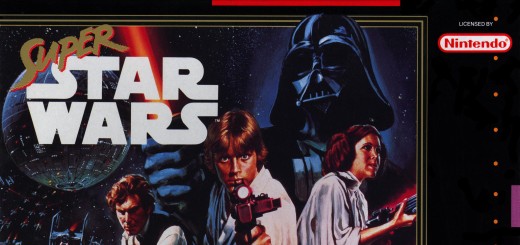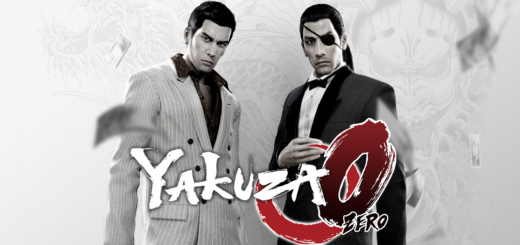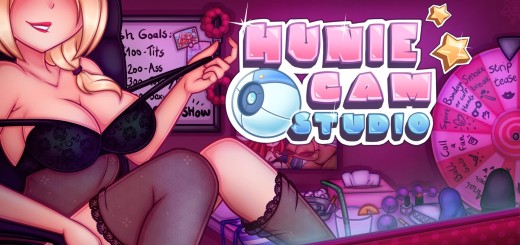YAKUZA 6: Fast Food and Fist Fights
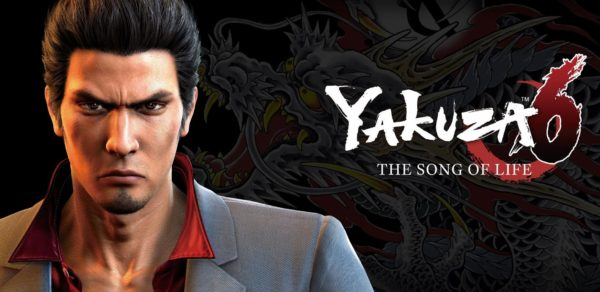
Wanderlust has become pretty trendy in the age of social media. Everyone likes traveling, but it’s also important to let all of your friends know JUST how much you in particular want to go somewhere that isn’t what you call “here.” Hitting things, on the other hand, has enjoyed an almost constant level of notoriety throughout the ages, and it’s through the melding of young people’s’ desperate desires to not be wherever they are and the tried-and-true strategy of punching dudes that are spoilin’ for a tussle that YAKUZA 6: THE SONG OF LIFE makes its success.
Technically the seventh game in the Yakuza series (ninth if you count the ones set in feudal Japan and the one set during a zombie apocalypse), YAKUZA 6: THE SONG OF LIFE picks up right where YAKUZA 5 left off, so this is actually one of those games where it’s important to know where the plot has gone for this new story to make sense. Fortunately, the game is self-aware enough to offer synopses of the first five games (excluding YAKUZA 0) at the main start screen. Furthermore, the game provides you with plenty of opportunity to familiarize you with characters and how they relate to the ex-gangster Kiryu’s story.
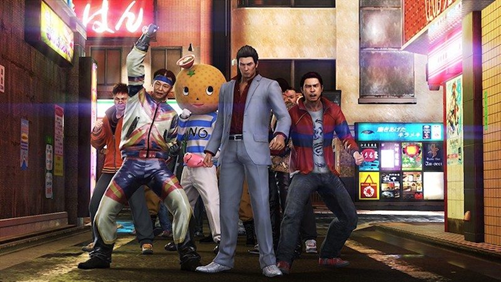
Everyone here is absolutely vital to the plot
As can be imagined, YAKUZA 6 is another melodramatic crime story with narrative threads so complex you might want to take notes. But if you’re someone who’s played any of the prior Yakuza games, you’re probably prepared for that; yes, the story is deep and twisting and yes, the fighting feels good and smashing someone’s face into a wall rarely gets old, but if you’ve played a Yakuza or two in the past, you’re probably most curious about the rest of the world, which I think after as many games as have been put out, is where much of the interest in this newest one lies.
Rest assured, there’s plenty to do and explore in this game as Kiryu explores 2016 Kamurocho and the small fishing town of Onomichi. There are plenty of sidestories to get caught up in, cabaret hostesses to romance, darts to play, and karaoke songs to sing. Kiryu’s travels in Onomichi result in him becoming the captain of an amateur baseball team, and there’s a whole sidequest focused on becoming friends with everyone at the local bar. One of the newer, more bizarre minigames involves Kiryu’s forays into adult chatrooms, attempting to seduce camgirls (played by live-action models) by hunting and pecking sweet nothings into a keyboard. Of course, you can easily watch camgirls online if you click here rather than playing the mini quest.
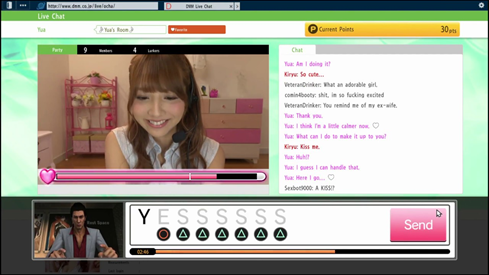
It’s one of those things where switching to hardcore porn when someone walks in makes it easier to explain
Exploring Kamurocho and the other cities featured in Yakuza is a lot of what the series has offered over the years. Seeing what restaurants are available, what restaurants have left between one game and the next, and always knowing that the Don Quijote store and SEGA centers will forever stand watch over the city gives each game a sort of nostalgic quality, and a sense of advancing years to complement every time Kiryu is referred to as “gramps” by some punk on the street.
The Yakuza series is decidedly Japanese, both in theme and design, and one of the more prominent features in games from that country is the focus on eating and the importance of what one eats. From DEADLY PREMONITION letting the player know they ate “a lot” of the pickles to the infinite open buffet that is DEAD RISING, Japanese devs really like making players eat. Yakuza is no exception to this rule, and is in fact probably more gastronomically inclined than even COOKING MAMA.
YAKUZA 6 manages to engage players in the act of eating and even dieting by attaching experience points to the things you eat in the game. Certain foods will grant certain specific kinds of experience in specific amounts, so if the player is looking to enhance a specific skill or stat, it behooves them to eat and drink things that help boost that experience. With the addition of a gym minigame, Kiryu has the option to perform specific exercises to gain experience, and his personal trainer will suggest what foods he should eat in order to maximize his gains. While it won’t change Kiryu from skinny to fat like in GRAND THEFT AUTO: SAN ANDREAS, it will affect how many experience points you earn and how quickly you can level up certain abilities. The Yakuza series has always made a mechanic out of getting experience and health from street food and fine Japanese whiskey, but with this new system as well as the gym minigames it seems to want to focus more on what Kiryu eats, and more importantly, what restaurants and eateries these cities have to offer.
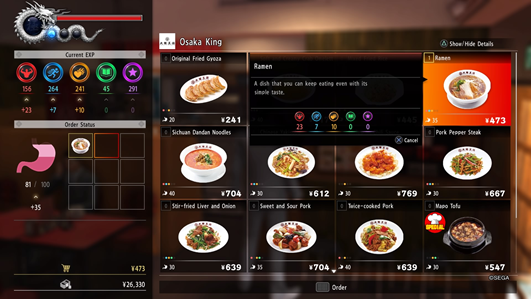
One of the best pieces of advice I can give is to not play this game while hungry
This plays into a tourism angle a bit as the two cities will have drastically different food options and different minigame options to accentuate the differences between locations. For instance, being a fishing village, Onomichi is the only place to pick up oysters and rural comfort food, as well as go spearfishing and play baseball. The lack of oceans and open baseball diamonds in Kamurocho make it more ideal for batting cages, SEGA arcades, and convincing cabaret hostesses how smooth an operator you are. In Onomichi the population’s significantly smaller, they’ve got an ancient temple to visit, and what’s more rural than the town being under the thumb of a menacing shipbuilding zaibatsu?
YAKUZA 6, while another delightfully absurd romp through the Japanese underworld, is not without its own issues. While SEGA is making good use of the PS4’s hardware to capture every thread on Kiryu’s jacket and every speck of blood that flies from a face, this comes at the expense of attention to other background details that made me wonder whether there was something wrong with what I downloaded. There’s a lot of screen-tearing as the camera shifts during gameplay, and elements can pop in and out of existence pretty jarringly. My TV may not be top-of-the-line, but I’m fairly certain this game isn’t supposed to be optimized for the PS4 Pro, and these hiccups really kind of stomp over what should be an immersive stroll through a fictionalized version of Tokyo’s red light district.
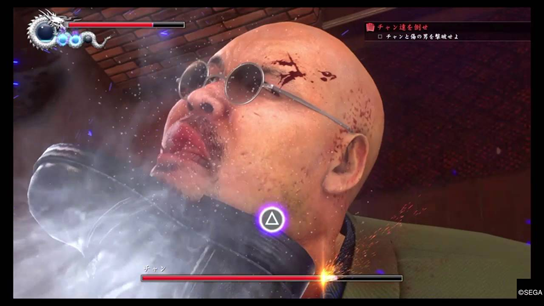
An Artist’s Representation
Also, if you went from 0 or Kiwami to 6, the different fighting styles have been taken out, which unfortunately puts a damper on the myriad ways you can put a punk that’s been steppin’ to this (the player) in their place. While the violence is still over the top and the Heat Actions brutally ridiculous, what I enjoyed about Kiwami was each style’s situational use.
But while the fighting is important (some would say central), one of the biggest values the game has is the sense of fidelity to the real-world location. People walk the streets, you overhear conversations, and you can practically taste the food picked up by Kiryu. The ramen, the burgers, the takoyaki; I don’t even know what takoyaki is, is it fried octopus or something? I don’t know, but I want it.
The Yakuza series and YAKUZA 6 seem curiously disposed toward selling the player on Japanese tourism, and while that is a particularly shallow way to sell a game, I’m strangely into it. There’s a lot to be said for a game that draws you in with action boys hitting each other real good but then does the ol’ tourism switcheroo and invites you to explore this new, shockingly tactile city. It’s like an Anthony Bourdain show but with more punching. But what I’ve appreciated about the series as well is that right before the player begins to feel as though they’ve been duped into searching for tickets to Osaka, the game pushes them into over-the-top violence that reminds them how nuts the franchise truly is at its best.
Verdict: Recommend

